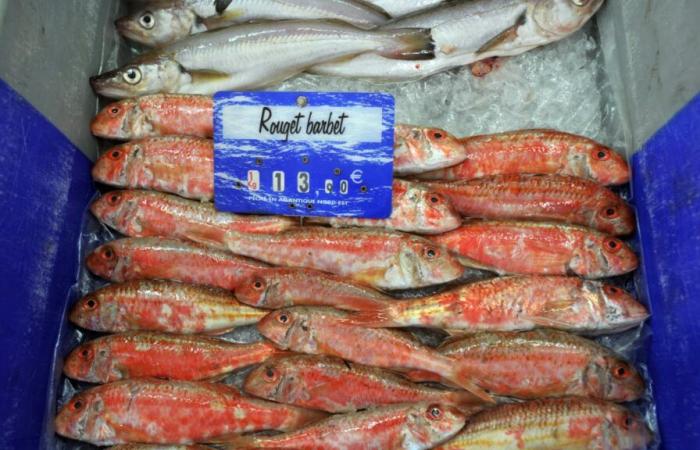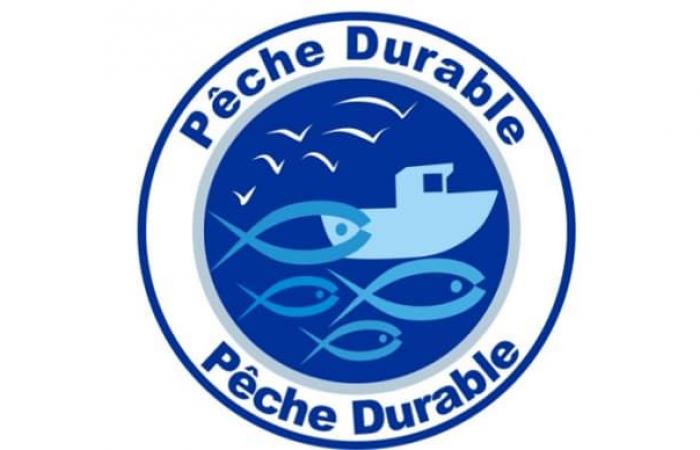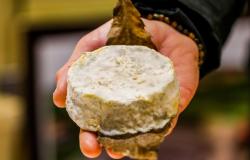26 million tonnes of fish caught illegally: this is the alarming observation drawn up by the Sea Foundation. However, it is possible to choose fish caught in good conditions and which are good for your health. Our advice.
One in five fish comes from illegal fishing. This is the conclusion of a report produced by the Fondation de la Mer and published Thursday, November 7. The problem is that this illegal fishing maintains the overexploitation of the seas and oceans, knowing that, according to the WWF association, around a third of the fish population are in a situation of overfishing.
An observation which, according to the Foundation of the Sea, threatens our food security by emptying the reserves of the seas and oceans. At their level, consumers have the opportunity to act by choosing fish caught legally and in good conditions, thus ensuring both the maintenance of stocks and health safety.
However, the information made available to consumers is difficult to read and complex to understand. RMC Conso helps you see things more clearly by giving you five tips for choosing more sustainable and healthy fish.
Raw rather than processed fish
It is better to choose raw fish rather than processed, firstly because a raw product (and this applies to all food categories) is always better for your health: it will not contain additives or preservatives.
But there is a second reason: the rules regarding compulsory labeling differ depending on whether the fish is fresh or processed (canned, breaded or even in a prepared dish).
They are much stricter for raw products and require four details to be indicated: the species of fish, the method of production (wild or farmed fish), the fishing zone and the fishing gear.
You will therefore be better informed about the origin of your fish and the conditions in which it was caught by choosing raw fish.
Choose small fish over big ones
The most common fish in supermarkets are tuna, salmon and cod. These are also the three species that we consume the most. But to avoid the overexploitation of a species and preserve its health, we should ideally vary our intake of seafood products much more.
Favoring small fish, which are at the bottom of the food chain, allows you to avoid eating fish that are too polluted. Large predatory fish accumulate more pollution by eating small fish.
This is evidenced by the recent investigation by the Bloom association, which revealed the presence of excessive amounts of mercury in certain cans of tuna. Tuna is a predatory fish, just like, for example, swordfish or hake.
Eating small fish also has an interest in terms of sustainability, as they are more numerous and reproduce more quickly. Among them, we find in particular sardines, mackerel, anchovies, fish which are also rich in omega 3. Among white fish, we can cite pout.
Mode of production, area and fishing gear
On the label, we will pay attention to the method of production: a wild fish is better than a farmed fish, certain intensive farms being regularly denounced by animal defense associations, notably L214, for the disastrous living conditions in which fish are raised.
Obviously, such a choice will have an impact on the price, wild salmon being for example much less common in supermarkets and at least 30% more expensive.
Another thing to consider is the fishing gear used. You will often see “trawl” written. The trawl is a huge net plunged to the bottom of the ocean, a method of fishing criticized by associations because it carries away everything in its path: fish but also corals and algae, thus destroying the marine ecosystem.
The yield from trawl fishing is much greater than that of line or trap fishing, although these are more sustainable fishing methods. The gear used will therefore also have an impact on the selling price of the fish.
Last information on the label: fishing area. There are 21 of them, defined by the FAO, the Food and Agriculture Organization of the United Nations, but remain quite vague. For example, you will see the mentions “Northeast Atlantic” or “Northwest Pacific”.
“Zones 27 and 37 correspond to zones in the European Union, ensuring greater chances of dealing with fishing carried out in correct conditions,” explains Sabine Roux de Bézieux, president of the Fondation de la mer, contacted by RMC Conso.
“The problem is that this classification does not distinguish the high seas, which are little monitored, from the EEZ (Exclusive Economic Zone), the maritime areas which are up to 370 km from the coast, which are much more monitored,” he regrets. -She.
The president of the Sea Foundation is therefore campaigning for this mandatory classification to be more precise, and indicates that there is more illegal fishing in the Pacific Ocean than in the Atlantic Ocean.
Furthermore, certain species are overfished in certain areas and not in others. Unless you learn by heart which areas are sustainably managed according to species, it's a real headache. Remember, however, that it is preferable to choose fish caught as close as possible to our coasts.
Trust a label
Fortunately, there are labels to make life easier. They are not perfect, but at least they help ensure that you are choosing legally caught fish.
The MSC label, for example, guarantees that the fish has been caught in an area where stocks are controlled. However, it does not impose any constraints on the gear, fish caught by trawl can therefore be certified.
“It could be improved but it has still proven itself, we recommend it,” confirms Sabine Roux de Bézieux.
The Sustainable Fishing ecolabel was set up by the Ministry of Agriculture in 2017. Quite restrictive, it is still little used.
The France Pavilion label guarantees that the fish was caught by a French boat. Please note, this does not mean that it was necessarily fished in France. But this at least avoids the risk of an illegal vessel.

Respect the seasons
As with fruits and vegetables or even cheese, there are seasons for fish. Thus, we will avoid consuming sea bass in winter, because this is its reproduction period. Cod is best eaten during the first three months of the year, from January to March.
Mussels are mostly eaten in winter, and if the mnemonic of saying that their season is during the months in “bre” is not entirely accurate, it still helps to remember that they are seafood to avoid in spring and summer.








